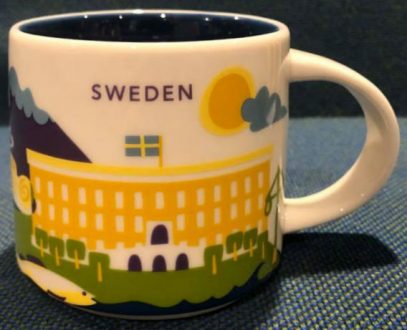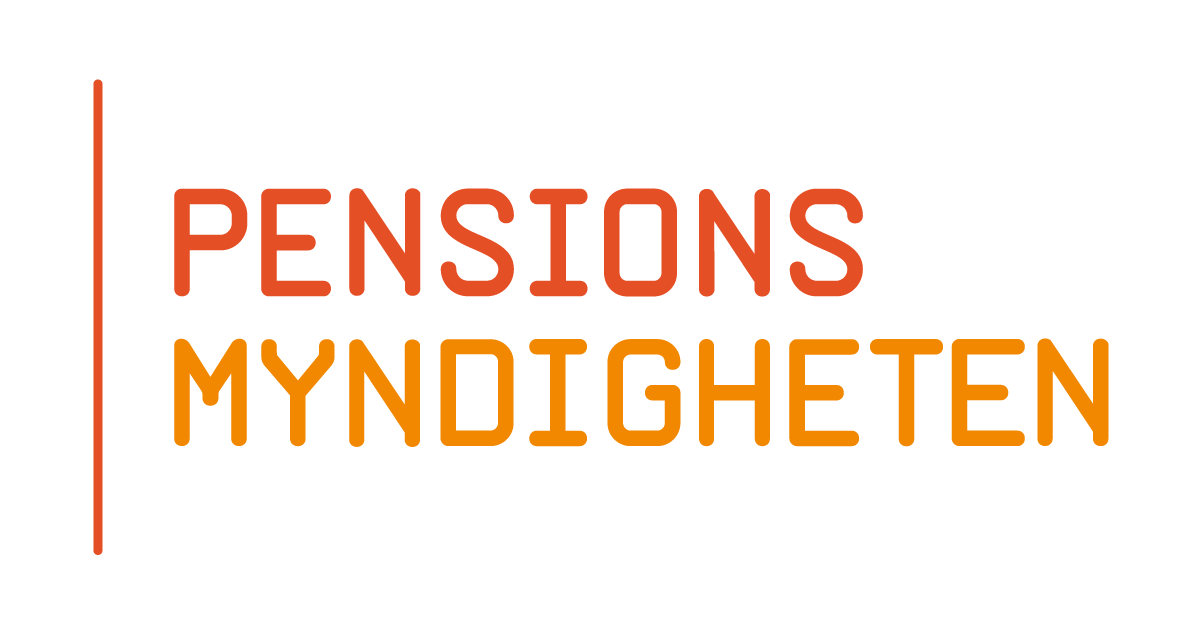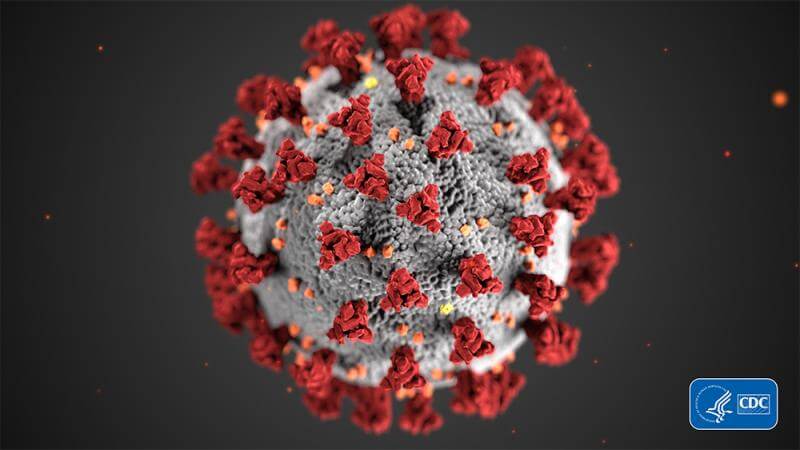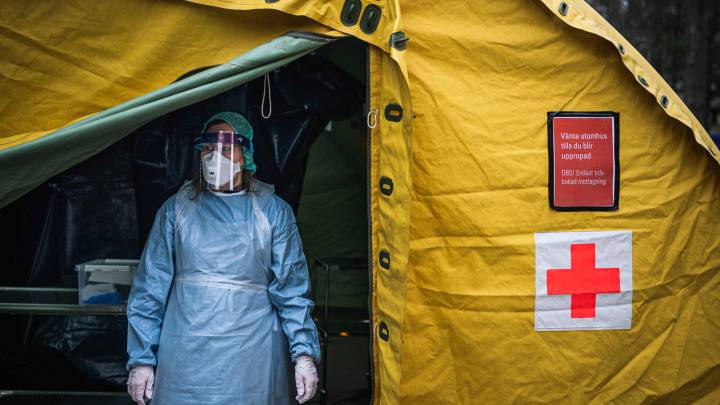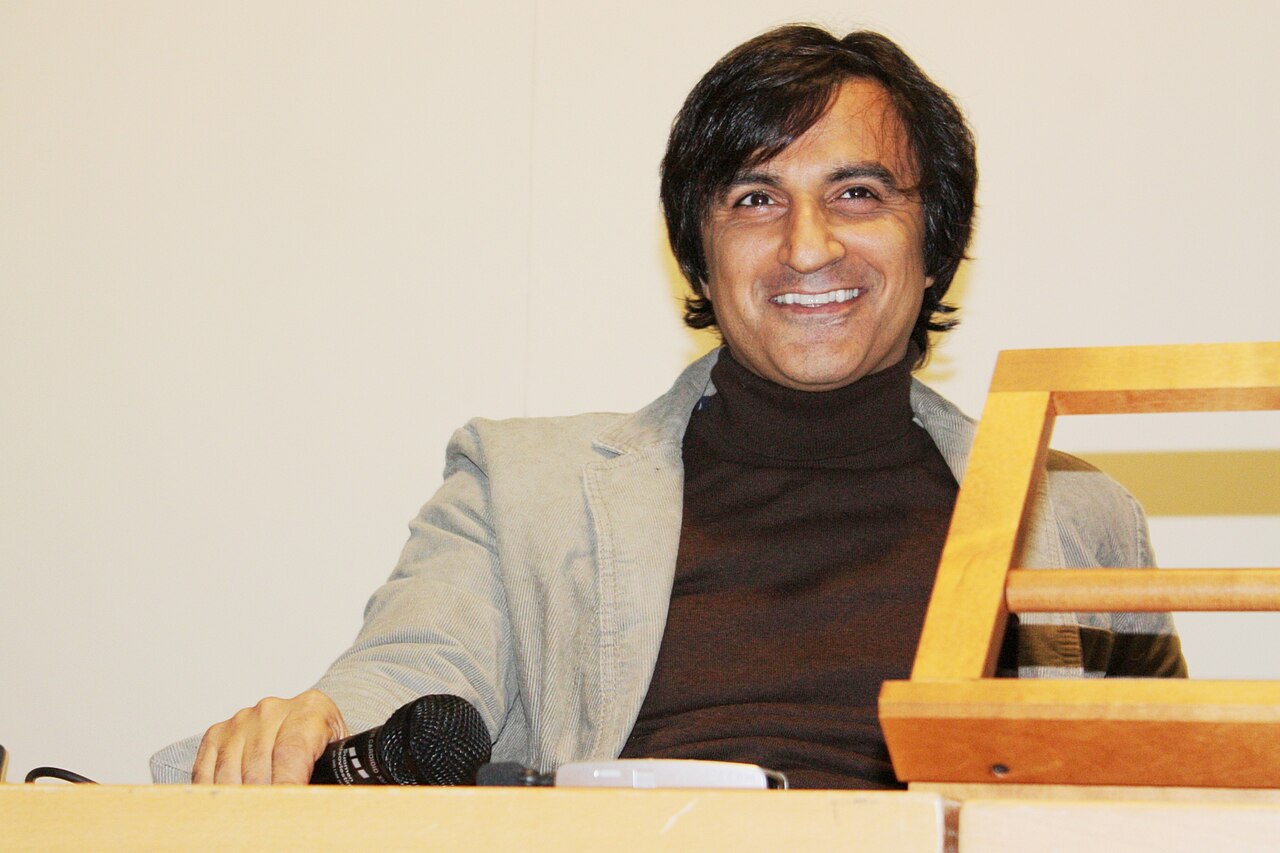Landschlacht, Switzerland, Thursday 23 July 2020
The list is long of the many long-neglected writing projects I have yet to complete.

Above: Gaspar Melchor de Jovellanos (1744 – 1811), a Spanish writer depicted with the tools of his trade.
Let me honest, I am my own worst enemy, playing a most dangerous game with myself, spending my life not doing what I want or should, on the bet that I can buy myself time, health and freedom to do it later.
I am a fool.

Being a doctor’s spouse, being underemployed, and living out in the country in the middle of nowhere has meant that the person that I spend the most time with is myself.
Shouldn’t I try to make myself as interesting as possible?

What makes it easier for me to procrastinate is that all of us these days are under the shadow of an ancient Chinese curse that condemns us with the words:
“May you live in interesting times.”
And there is always something interesting to comment on these days.

What keeps my attention, as is his intention, is the awesome horror that is the current US President and the disintegration of the nation he is (ir)responsible for.
But when I turn away from the monster media machine that is America and tear my focus from my homeland of Canada or my current country of residence, Switzerland, I find my attention drawn to a European exception in these days of disease and dilemma, of depression and despair:
Sweden.
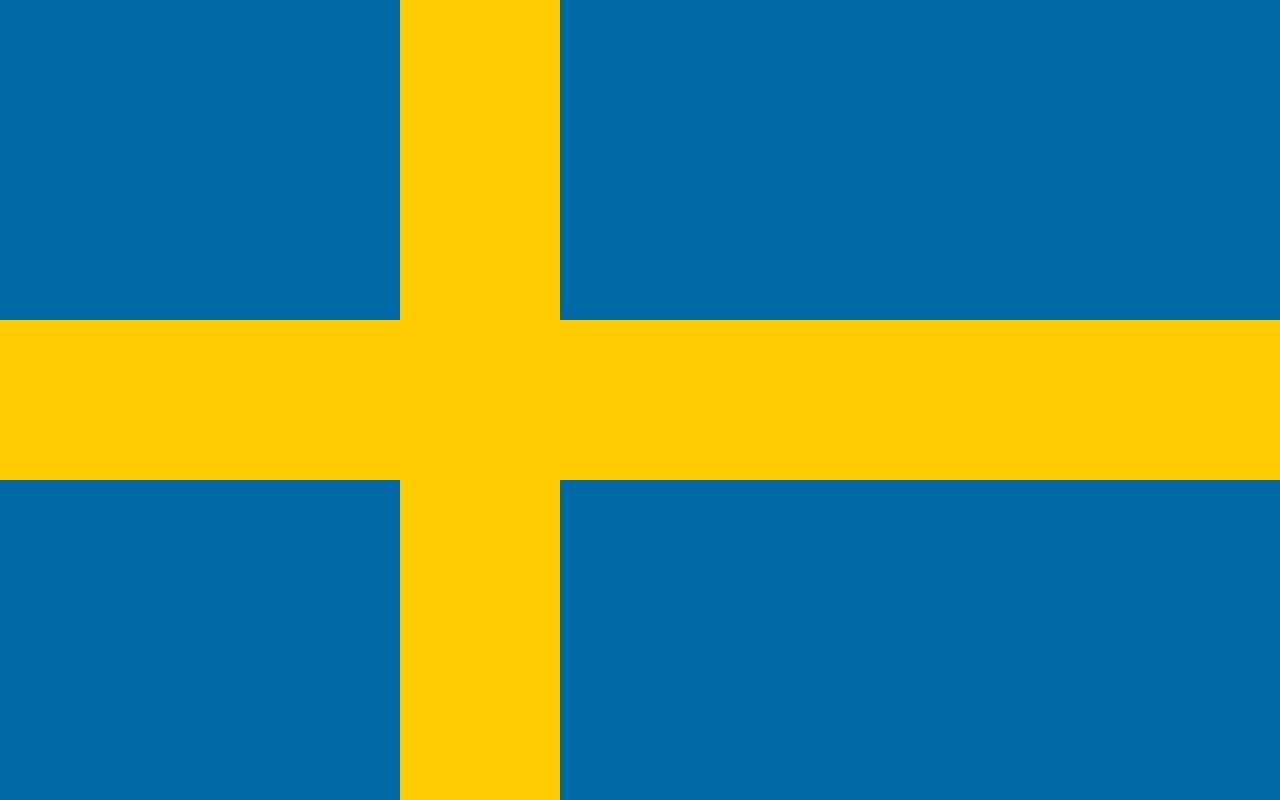
I like Sweden.
Their women are beautiful, their society humane and hard-working, their landscape lovely.
But the Swedes have, inexplicably in the eyes of the rest of Europe, have done, for the most part, very little to protect themselves from the pandemic that presently plagues the planet.
And though their numbers seem nowhere as high as America, per capita the number of Covid-19 cases and fatalities is higher in Sweden than the US.
The US has had (or will soon have, sadly) 140,000 Covid-19 deaths out of a population of 350 million.
Sweden is approaching 5,500 Covid-19 dead out of a population of almost 10 million.

Above: Map of confirmed COVID-19 cases per 100,000 residents in Sweden per region
The US has botched much of their response to this pandemic: reacted too late, tested too few, fought too feebly, reopened too rashly and acted too irrationally.
But late as they may have been, some states nevertheless practiced lockdowns, self-quarantines, social distancing and facemask wearing.

Above: Cases of COVID-19 per 100,000 residents in the USA by county
But Sweden has done little to lockdown their country at all, even though all their Scandinavian neighbours did.
Excepting (and only after 88% of Covid-19 fatalities were seniors older than 70) old age communities, the nation is a land where people live their lives as if the pandemic doesn’t exist, despite the rates of cases and fatalities.

To be fair to Sweden, if you are going to catch a virus, Sweden is a far more humane place to do so than the United States.
Employment is better protected, health care is universal and the population is mature and responsible when it comes to doing what is right for the common good, rather than self-righteously and selfishly refusing to help others in the name of personal rights.
But the Swedes share a disturbing similarity to Americans:
Excessive national pride.
And it is this pride that has hurt both nations.

Peter Berlin, in his Xenophobe’s Guide to the Swedes, phrases Swedish nationalism and identity this way:
“The Swedes are an enterprising, fair-minded people who suffer from a mild case of megalomania….
There is hardly anything in any other nation with which the Swedes do not compare themselves and their country favourably, be it the length of an argument, the breadth of a generalization or the height of an audacity.
To add credibility, comparisons are usually given a thin patina of self-depreciation but this fails to conceal their underlying national pride.
Swedes are always surprised to discover that foreigners do not keep a framed map of Sweden above their beds.
They are amazed to encounter people who think the capital of Sweden is (not Stockholm but) Oslo or that Sweden (instead of Switzerland) is not the home of Swatch.

Above: Images of Stockholm

Such manifestations of ignorance can only be combined with a concerned campaign of enlightenment, which is why they never tire of lecturing others about Sweden.

Above: Uppsala University
(That Greta Thunberg is Swedish surprised no one.)

Above: Greta Thunberg
(I witnessed – and wrote about – this lecturing characteristic when I worked at Starbucks with Sweet Swede, a lovely, intelligent and talented Swedish barista who has since returned back to her home country.
Please see:
- The surrender of the Sweet Swede
- Bosnian kebab on a stereotypical day
….of this blog for a glimpse of working with a Swede.)
The Swedes sniff at public manifestations of patriotism, conveniently forgetting that the blue and yellow Swedish flag is everywhere to be seen….
The Swedish national anthem says it all:
“We thrive on the memories of our glorious past.”
You ancient, you free, you mountainous north
You quiet, you joyful beauty!
I greet you, loveliest land upon Earth,
𝄆 Your sun, your sky, your green meadows. 𝄇
You are enthroned on memories of great olden days,
When honoured your name flew across the Earth,
I know that you are and remain what you were,
𝄆 Yes, I want to live, I want to die in the North. 𝄇
I forever want to serve you, my beloved land,
fidelity until death I want to swear to you.
Your right I shall defend with mind and with hand,
𝄆 the glorious ones carry your banner high. 𝄇
With God I shall fight for home and for hearth,
for Sweden, the beloved mother soil.
Exchange you, I won’t for anything in this world
𝄆 No, I want to live, I want to die in the North 𝄇

Above: Richard Dybeck (1811 – 1877), lyricist of Du gamla, Du fria, the Swedish national anthem
This is a reference to the Storhetstid (era of greatness) when Swedes ruled most of northern Europe.

Even earlier, the Vikings had given the peoples around the Mediterranean, on the British Isles and in North America a taste of Swedish brawn.
Today’s school children are exhorted to sträcka pd sig (keep their heads high) when the subject of the Vikings is raised in history class.

Since those heady days, however, the Swedes have made a spectacular spinaround from Rambo to Rimbaud, crusading for a world of innocence while making a profit on the side.
In the 20th century, as nations were tearing themselves apart, the Swedes tried to mend the broken pieces,

Above: View of Stora Sjöfallet National Park
Raoul Wallenberg, Folke Bernadotte, Dag Hammarskjöld and Olaf Palme have gone down in history as dauntless mediators.

Above: Raoul Wallenberg (1912 – 1945) was a Swedish architect, businessman, diplomat, and humanitarian.
He saved tens of thousands of Jews in Nazi-occupied Hungary during the Holocaust from German Nazis and Hungarian Fascists during the later stages of World War II.
While serving as Sweden’s special envoy in Budapest between July and December 1944, Wallenberg issued protective passports and sheltered Jews in buildings designated as Swedish territory.

Above: Folke Bernadotte, Count of Wisborg (1895 – 1948) was a Swedish nobleman and diplomat.
During World War II, he negotiated the release of about 31,000 prisoners from German concentration camps, including 450 Danish Jews from the Theresienstadt camp.
They were released on 14 April 1945.
In 1945, he received a German surrender offer from Heinrich Himmler, though the offer was ultimately rejected.
After the war, Bernadotte was unanimously chosen to be the United Nations Security Council mediator in the Arab–Israeli conflict of 1947–1948.
He was assassinated in Jerusalem in 1948 by the paramilitary Zionist group Lehi while pursuing his official duties.
Upon his death, Ralph Bunche took up his work at the UN, successfully mediating the 1949 Armistice Agreements between Israel and Egypt.

Above: Dag Hjalmar Agne Carl Hammarskjöld (1905 – 1961) was a Swedish economist and diplomat who served as the second Secretary-General of the United Nations.
Hammarskjöld still remains the youngest person to have held the post, being only 47 years old when he was appointed in 1953.
His second term was cut short when he died in the crash of his DC-6 airplane in Northern Rhodesia while en route to cease-fire negotiations during the Congo Crisis.
He is the only person to be awarded a Nobel Peace Prize posthumously.
Hammarskjöld has been referred to as one of the two best secretaries-general of the United Nations, and his appointment has been mentioned as the most notable success for the UN.
US President John F. Kennedy (1917 – 1963) called Hammarskjöld “the greatest statesman of our century.”
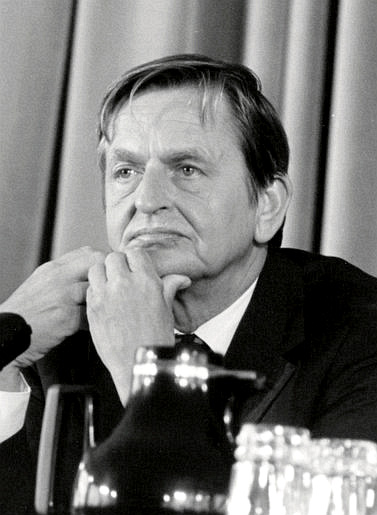
Above: Sven Olof Joachim Palme (1927 – 1986) was a Swedish politician and statesman.
A longtime protégé of Prime Minister Tage Erlander, Palme led the Swedish Social Democratic Party from 1969 until his assassination in 1986, and was twice Prime Minister of Sweden, heading a Privy Council Government from 1969 to 1976 and a cabinet government from 1982 until his death.
Electoral defeats in 1976 and 1979 marked the end of Social Democratic hegemony in Swedish politics, which had seen 40 years of unbroken rule by the party.
While leader of the opposition, he parted domestic and international interests and served as special mediator of the United Nations in the Iran–Iraq War, and was President of the Nordic Council in 1979.
He returned as Prime Minister after electoral victories in 1982 and 1985.
Palme was a pivotal and polarizing figure domestically as well as in international politics from the 1960s onward.
He was steadfast in his non-alignment policy towards the superpowers, accompanied by support for numerous third world liberation movements following decolonization including, most controversially, economic and vocal support for a number of Third World governments.
He was the first Western head of government to visit Cuba after its revolution, giving a speech in Santiago praising contemporary Cuban and Cambodian revolutionaries.
Frequently a critic of United States and Soviet foreign policy, he resorted to fierce and often polarizing criticism in expressing his resistance to imperialist ambitions and authoritarian regimes, including those of Francisco Franco of Spain, Leonid Brezhnev of the Soviet Union, António de Oliveira Salazar of Portugal and Gustáv Husák of Czechoslovakia, as well as John Vorster and P. W. Botha of South Africa.
His 1972 condemnation of American bombings in Hanoi, notably comparing the tactic to the Treblinka extermination camp, resulted in a temporary freeze in Sweden – United States relations.
Palme’s assassination on a Stockholm street on 28 February 1986 was the first murder of a national leader in Sweden since Gustav III in 1792, and had a great impact across Scandinavia.
Local convict and addict Christer Pettersson was originally convicted of the murder in district court but was acquitted on appeal by the Svea Court of Appeal.
On 10 June 2020, Swedish prosecutors held a press conference to announce that there was “reasonable evidence” that Stig Engström had killed Palme.
Given that Engström had committed suicide in 2000, the authorities also announced that the investigation into Palme’s death was to be closed.
Inspired by their famous examples, the Swedes now see themselves as the World’s Conscience.
They also see themselves as honour personified.
With unfailing regularity, Swedish cabinet ministers admit to sleaze and promptly resign.
Honesty doesn’t get much better than that.

Above: Rosenbad, in central Stockholm, has been the seat of the Government since 1981.
But could it be that the powers-that-be are not being honest with the Swedish people, not being honest about the error of their judgment?
Could this inability to admit their mistake in not having lockdowns, such as the rest of Scandinavia, the rest of Europe and much of the world did, result from the confident belief that Sweden is superior?
To be fair to the Swedes, their products are top quality, their economy is normally strong, their landscape is spectacular, crime is low, incomes are high, and the government picks up the tab (though taxes are high) for health care, daycare and education from the first cry of life to the last gasp of death.
Sweden is the most vibrant example of the welfare state that blends the best of socialism and capitalism.
Above: Nordstan is one of the largest shopping malls in northern Europe.
Cities are pristine, culture and museums are well-funded, strikes are rare, roads are smooth, and everything is planned in an orderly way.
To be Swedish is to be smug.
Once upon a time, theirs was the most successful socio-economic experiment in the world, with Europe’s lowest infant mortality rate, longest life expectancy and one of the planet’s happiest and wealthiest societies.

Cultures evolve over time as a means to survive their environment and get along with one another.
Sweden is a nation of introverts who still treasure their independence and crave a large amount of space, but born out of long winters, high taxes and a sense of being far removed from the rest of the world, there is a common trait among Swedish people of a deeply felt svarmod (dark melancholy) wherein they brood a lot over the meaning of life in a self-absorbed sort of way without ever arriving at satisfactory answers.
It has often been suggested that the stark images and unresolved plots in many of Ingmar Bergman’s films are accurate snapshots of the Swedish psyche.

Above: Ernst Ingmar Bergman (1918 – 2007) was a Swedish director, writer, and producer who worked in film, television, theatre, and radio.
Considered to be among the most accomplished and influential filmmakers of all time, Bergman’s films include Smiles of a Summer Night (1955), The Seventh Seal (1957), Wild Strawberries (1957), Persona (1966), Cries and Whispers (1972), Scenes from a Marriage (1973), and Fanny and Alexander (1982); the last two exist in extended television versions.
Bergman directed over 60 films and documentaries for cinematic release and for television screenings, most of which he also wrote. He also directed over 170 plays.
He eventually forged a creative partnership with his cinematographers Gunnar Fischer and Sven Nykvist.
Among his company of actors were Harriet and Bibi Andersson, Liv Ullmann, Gunnar Björnstrand, Erland Josephson, Ingrid Thulin, and Max von Sydow.
Most of his films were set in Sweden, and many films from Through a Glass Darkly (1961) onward were filmed on the island of Fårö.
Philip French referred to Bergman as “one of the greatest artists of the 20th century.
He found in literature and the performing arts a way of both recreating and questioning the human condition.“
Director Martin Scorsese commented:
“If you were alive in the 50s and the 60s and of a certain age, a teenager on your way to becoming an adult, and you wanted to make movies, I don’t see how you couldn’t be influenced by Bergman.
It’s impossible to overestimate the effect that those films had on people.“
(I am forced to take Mr. Berlin’s assessment with a measure of caution as I can only report on my own limited personal experience (only working hours) with both Sweet Swede and a vacation (only a fortnight) with my wife in Sweden.
What characteristics define the Swedes were difficult for me to personally define under these circumstances.
I was afforded glimpses at best.
Mr. Berlin suggests that the Swedes are self-conscious and socially awkward.
This aspect of their national psyche I personally did not see, for Sweet Swede was anything but self-conscious and socially awkward and the Swedes we encountered on our vacation were open and friendly.)
Another common trait the Swedes are said to possess is undfallenhet (a tendency to yield under pressure).
While their Viking ancestors used confrontation to settle even the most trivial of scores, modern day Swedes avoid conflict whenever possible.
They believe undfallenhet makes for a smarter strategy.
After all, undfallenhet has kept Sweden out of war for nearly two centuries (they were officially neutral during both World Wars) and helped it attain one of the highest living standards in the world.

Above: The Saab JAS 39 Gripen is an advanced Swedish multi-role fighter aircraft of the Swedish Air Force.
Exactly how Sweden avoided the devastation of WW2 that visited much of the rest of Europe is a matter for future historians to unravel, but it was more than just waving the neutrality flag, an act that proved ineffective almost everywhere else.
The Swedish government succumbed to Hitler’s demands that German troops be allowed to transit through neutral Sweden to sustain the occupation of Norway.
To this day, the memory chokes Norwegians with emotion.

Above: German officers in front of the National Theatre in Oslo, Norway, 1940
Germany relied on Swedish iron ore, dynamite and ball bearings (the latter two are Swedish inventions) – all instrumental in the waging of war – which Sweden provided the Nazis during their rule.
Sweden was also in Hitler’s good graces for having allowed Germany to practice military exercises and conduct weapons experiments on Swedish soil before the War – actions which flew in the face of the Treaty of Versailles drawn up in the aftermath of the First World War.

Above: Sweden’s location in Europe, 1942 – (red) Sweden, (dark green) the German Reich, (light green) areas under German occupation, (pale green) German allies, co-belligerents and puppet states, (purple) Allies and territories occupied by the Allies, (grey) other neutral territories
It has also been suggested that Sweden ran a clandestine eugenics programme from 1935 to 1976, wherein at least 60,000 women were forcibly sterilized for showing gypsy or mixed race features.
Above: The Institute for Racial Biology, Uppsala
That being said, several Swedish diplomats, including Raoul Wallenberg and Per Anger, helped 100,000 Jews in Hungary escape from the fate of concentration camps, while Sweden itself served as a safe haven for Jews, as in 1943 when 7,900 fled there from Denmark.
Above: Per Johan Valentin Anger (1913 – 2002) was a Swedish diplomat.
Anger was Raoul Wallenberg’s co-worker at the Swedish legation in Budapest during World War II when many Jews were saved because they were supplied with Swedish passports.
After the war, he spent a lot of time trying to clarify Wallenberg’s fate.
To be fair to Sweden, without condemnation or condoning, it was not easy to preserve their country or their ethics in an era of gruesome insanity.
(Swiss neutrality since the end of the Napoleonic era has done the same for the Swiss, and, like Sweden, the Swiss learned there was better business in selling arms than in using arms.)

Being aggressive is considered a macho thing in many Western cultures.
In modern Sweden it is viewed as a serious handicap.
The Swedish Model, developed after WW2, a middle way between communism and capitalism, emphasizes equality between citizens and takes care of them all from nursery to nursing home.

In the 1950s, Olof Palme and Prime Minister Tage Erlander formulated the basis of Swedish social democracy and what would become known as the “Swedish model“, drawing inspiration not from reformist socialism but from the American economist John Kenneth Galbraith and the liberal ideas he articulated in The Affluent Society.

Above: Tage Erlander (1901 – 1985)
The ideological basis of the Swedish “affluent society” rested on a universal welfare state providing citizens with economic security whilst simultaneously promoting social solidarity, representing a break with earlier notions of selective welfare provision in Sweden.
The Swedish model was characterized by a strong labor movement as well as inclusive publicly-funded and often publicly-administered welfare institutions.

Above: John Kenneth Galbraith (1908 – 2006)
“Human beings are good. We can improve conditions through reforms.”
(Gunnar Myrdal)
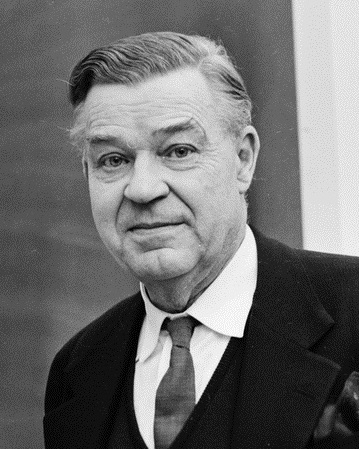
Above: Karl Gunnar Myrdal (1898 – 1987) was a Swedish economist and sociologist.
In 1974, he received the Nobel Memorial Prize in Economic Sciences with Friedrich Hayek for “their pioneering work in the theory of money and economic fluctuations and for their penetrating analysis of the interdependence of economic, social and institutional phenomena.”
He is best known in the United States for his study of race relations, which culminated in his book An American Dilemma: The Negro Problem and Modern Democracy.
The study was influential in the 1954 landmark US Supreme Court Decision Brown v. Board of Education.
In Sweden, his work and political influence were important to the establishment of the Folkhemmet (people’s home) and the welfare state.
(The base of the folkhem vision is that the entire society ought to be like a family, where everybody contributes, but also where everybody looks after one another.)
Undfallenhet is not to be confused with cowardice.
Sweden has long stood firm on its convictions regarding matters like climate, apartheid and dictatorship.
The late great Swedish Prime Minister Olaf Palme infuriated the United States (by opposing the war in Vietnam) and Israel (by supporting Palestine) and the government of South Africa (by supporting Nelson Mandela and loudly opposing apartheid).

Above: Images of the Vietnam War (1955 – 1975)
In times of trouble, the Swedes always land on their feet.
When the world goes to war, Sweden stays clear of the antagonists through a blend of diplomacy and concessions.
When the bottom falls out of the economy, the nation’s Central Bank raises the interest rate and re-enters the world market with a smile on its face.

Above: Central Bank of Sweden logo
When the flagships of Swedish industry (like Absolut Vodka, Saab, Volvo, IKEA, Ericsson, Astra) feel the pinch of international competition, they merge with their competitors and move their headquarters abroad.

In Sweden, in the battle between idealism, heroism and common sense, pragmatism always wins.
Governing a nation ain’t easy, and for Swedish Prime Minister Stefan Löfven, (in power since 2014, re-elected in 2018), governing has been complicated by the need to form minority coalitions to make governance possible.
Pragmatism and undfallenhet have carried Löfven’s cabinets through their 2014 budget crisis, the 2015 European migrant crisis and the 2017 national security crisis, but the corona virus is a different phenomena.

Above: Swedish Prime Minister Stefan Löfven
On 24 February 2020, the government announced that they would be spending 40 million SEK (roughly €4 million) towards the World Health Organization’s efforts in containing the 2019 – 2020 corona virus outbreak.

Public gatherings of more than 500 people were banned on 11 March.
A set of emergency reforms were announced on 16 March in order to curb the economic effects of the corona virus.
The state will provide all employees with paid sickness leave and will also give companies more time to pay taxes.
The reform package has a capped budget of 300 billion krona.

On 17 March, schools providing secondary and higher education (including universities) were advised to close and to teach classes remotely.
In conjunction with the European Union announcing a 30-day travel ban for people entering the Union, the government instituted a ban on non-essential travel from non-EU nations to Sweden in the evening of 17 March.

Sweden has not imposed a lockdown, unlike many other countries, and kept large parts of its society open.

Above: Queue to the Swedish state liquor store with a 1.5 meter distance under the Covid- 19 pandemic guidelines
The Swedish Constitution legally protects the freedom of movement for the people, thus preventing a lockdown in peace time.
The Swedish public is expected to follow a series of voluntary recommendations from the government agency responsible for this area, in this case the Public Health Agency of Sweden (Folkhälsomyndigheten).

Above: The Public Health Agency HQ
The Swedish Constitution prohibits ministerial rule – politicians overruling the advice from its agencies is extremely unusual in Sweden – and mandates that the relevant government body, in this case an expert agency – the Public Health Agency – must initiate all actions to prevent the virus in accordance with Swedish law, rendering state epidemiologist Anders Tegnell a central figure in the crisis.
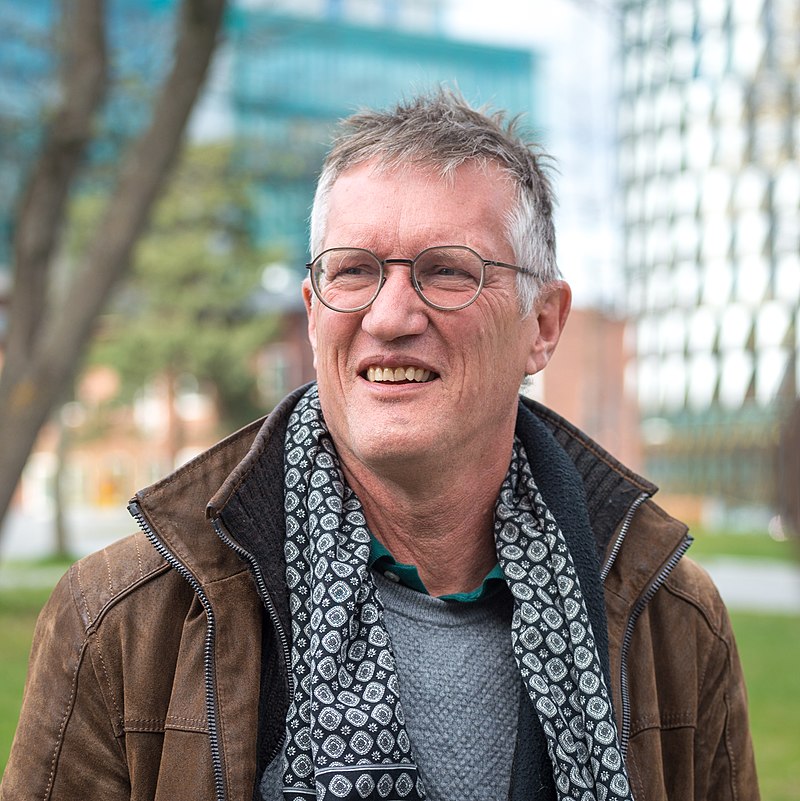
Above: Anders Tegnell
Having an expert agency almost completely in control of the country’s COVID-19 response without the involvement of politicians set Sweden apart from other countries.

Following agency advice, the government has passed legislation limiting freedom of assembly by temporarily banning gatherings of over 50 individuals, banning people from visiting nursing homes, and physically closing secondary schools and universities.
Primary schools have remained open, in part to avoid healthcare workers staying home with their children.

The Public Health Agency issued recommendations to:
- If possible, work from home
- Avoid unnecessary travel within the country
- Engage in social distancing
- People above 70 to stay at home, as much as possible.
- Those with even minimal symptoms that could be caused by COVID-19 are recommended to stay home.

The karensdag, or initial day without paid sick-leave, has been removed by the government and the length of time one can stay home with pay without a doctor’s note has been raised from 7 to 21 days.
The pandemic has put the Swedish healthcare system under severe strain, with tens of thousands of operations having been postponed.
Initially, Swedish hospitals and other facilities reported a shortage of personal protective equipment.
At the start of the pandemic, concerns were made that Swedish hospitals wouldn’t have enough capacity to treat all who could become ill with the disease, especially in regard to those needing intensive care.
Swedish hospitals were eventually able to double the number of intensive care beds in a few weeks, and the maximum capacity was never exceeded.

Above: Sahlgrenska University Hospital in Mölndal, Sweden
Sweden began testing for the virus in January, and as of 17 May 2020, approximately 276,000 samples had been analysed.
As of 24 June 2020, there have been 62,324 confirmed cases, of which 2,387 have received intensive care, and 5,209 confirmed deaths related to COVID-19 in Sweden, with Stockholm County being the most affected.

Above: Medical tent set up outside Visby Hospital, 14 March 2020.
(As of 16 July 2020, 5,572 confirmed corona virus related deaths were reported, an average of 47 dead per 100,000 people.)
As of early June, the number of deaths with confirmed COVID-19 has been significantly higher in Sweden compared to most of Europe, including other Scandinavian countries.
Similar to other European countries, close to half of those who died had been living at nursing homes.

Above: Medical tent set up outside Enköping Hospital
Many outside Sweden considered the Swedish response to the pandemic to be strikingly different to that of other countries.
This resulted in an unprecedented increase of international news coverage on Sweden.
And has raised the question….
Was staying open worth it?
Politically speaking, was it wise for a minority coalition government to test Swedish faith in their handling of this crisis?
Was it wise to leave the recommendations of the Public Health Agency to the free will of Swedes who practice these guidelines if they choose?
And there is no sign that the Public Health Agency or the Löfven government will change their policy, despite clear signs of waning public confidence in this policy of Lockdown Lite.

Above: The Riksdag (Swedish parliament) in session
The reasoning, besides constitutional considerations, is to minimize the economic damage to the country.
But with recovering European nations sealing their borders from the Swedes and with their major trading partner the United States in overall worse straits than Sweden, the Swedish economy has not been saved.
Due to the Swedish economy being heavily reliant on exports (which attributes to around half of the Swedish GDP) with the shrinking global economy being predicted to decrease international demand of Swedish goods and services.
The economy is also affected by problems with global supply lines, which had forced some of the biggest manufacturing companies in Sweden, including Scania and Volvo cars, to halt their production in March, as well as a decrease in consumption.

The National Institute of Economic Research also reported that unemployment in Sweden is rising.
Above: Logo of Sweden’s National Institute of Economic Research
The Swedish Pensions Agency has calculated a 1.5% drop in pensions for 2021, as Swedish pensions are attached to GDP and income.
While some predicted a rebound already in the second half of 2020, Magdalena Andersson warned that things “could get worse before they get better” – svarmod never dies.
In mid-June, Andersson said it was possible that Sweden had reached the bottom of the downturn, as the government had revised their forecast to a -6% GDP downturn in GDP and an unemployment level of 9.3% (down from -7% and 11% respectively in their previous forecast) although they expected unemployment to further increase in 2021 to 10.3%.
However, she cautioned that there was still a big uncertainty regarding the numbers.

Above: Swedish Finance Minister Magdalena Andersson
Similarly, the National Institute of Economic Research also revised their forecast downwards, to a -5.5% fall in GDP and for unemployment to increase to 8.5% during 2020, with a further increase up to 10% in 2021.

Above: Natural resources of Sweden
Fe – iron ore, PY – pyrite, Cu – copper, Zn – zinc, As – arsenic, Ag – silver, Au – gold, Pb – lead, U – Uranium, C – coal, OS – oil shale
In mid-March, the government proposed a 300 billion SEK (€27bn) emergency package to reduce the economic impact of the crisis.
The proposal included a system with a reduction in work hours where the government will pay half the salary, aiming to help businesses stay afloat without having to do layoffs.
Further, the government would pay the employer’s expenses for any sick leaves, which is normally shared between the employer and the state.
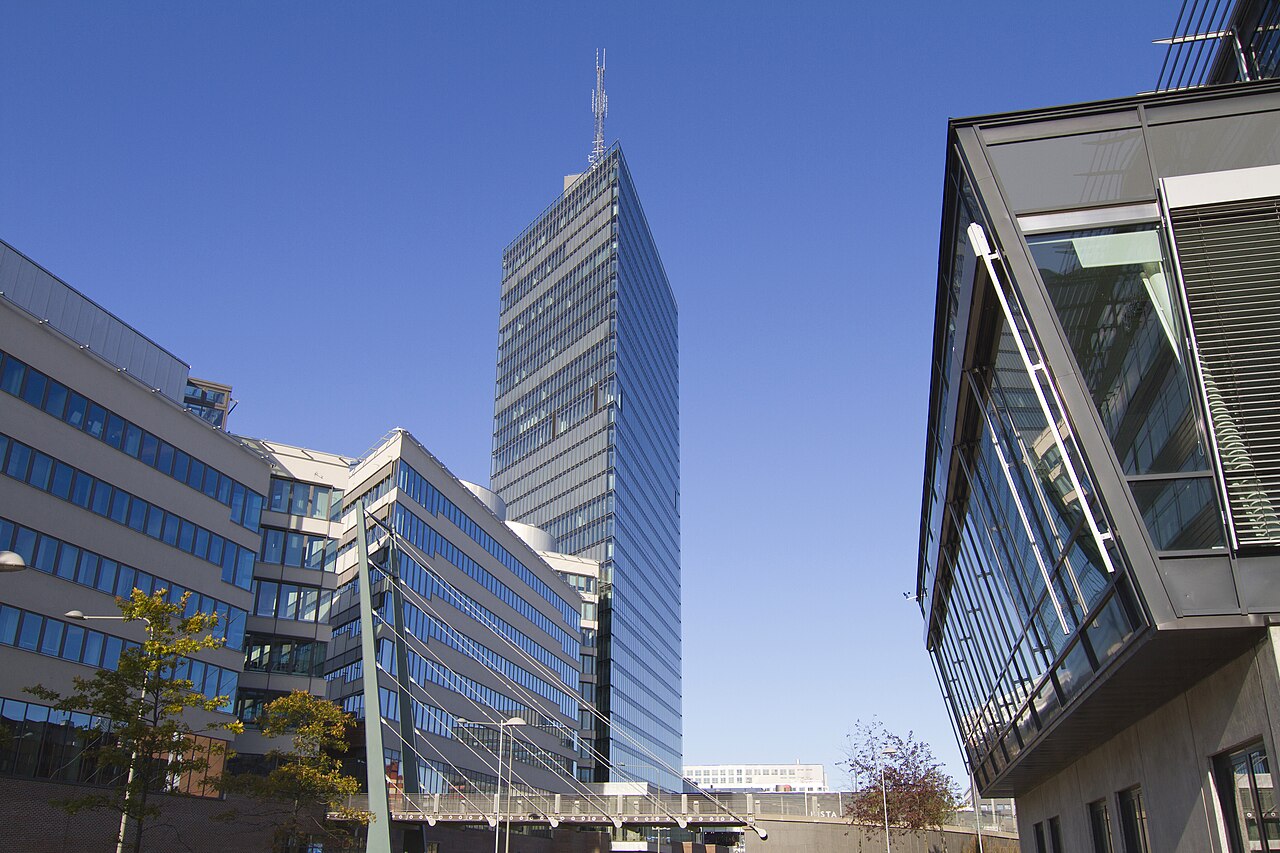
Above: Kista Science Tower in Kista, north of Stockholm City.
This is the tallest office building in Scandinavia
The normal costs of employer contributions have also been temporarily discontinued for small business owners.
This will save small businesses approximately 5000 SEK per employee each month but will result in a loss of tax revenue of 33 billion SEK.
The budget emergency package proposed by the government in mid-March to lessen the economic impact of the crisis was supported across the political spectrum, including all parties in opposition in the Riksdag (Swedish parliament).
It was also welcomed by trade unions as well as the private and business sectors.
However, some union representatives stressed that ‘it won’t be enough’, a view shared by the biggest employer’s organisation, the Confederation of Swedish Enterprise.

On 2 April, the Financial Supervisory Authority (Finansinspektionen) decided that Swedish banks temporarily can allow exemptions for housing mortgage lenders regarding amortising of loans.

On 5 April, at the first day of the Holy Week, King Carl XVI Gustaf addressed the nation in a televised speech.
In his speech, he stressed that all Swedes had an obligation to the country to “act responsibly and selflessly“.
He also stressed that many who otherwise would travel, spend time with friends and family or go to church would need to make sacrifices during the upcoming Easter holiday.
In his speech, he specifically addressed those working or volunteering in the health-care sector, saying:
“This is a huge task. It requires courage. And it will require endurance. To all of you involved in this vital work, I offer my heartfelt thanks“, as well as other people doing vital work in society, to ensure Swedes “can buy food, that public transport continues to operate, and everything else we so easily take for granted – my warmest thanks to you all“.
He finished saying that all would embrace the message:
“The journey is long and arduous. But in the end, light triumphs over darkness, and we will be able to feel hope again“, ending his speech wishing everyone a happy Easter.

Above: His Majesty King Carl XVI Gustaf of Sweden
Anders Tegnell, Sweden’s equivalent to America’s Anthony Fauci, is the public face of the Covid-19 crisis, but it is a matter of opinion and debate whether Tegnell is the hero or the villain of this saga.
Tegnell has maintained the Swedes’ constitutional rights, but has it been at the cost of the lives of the most vulnerable in Swedish society?
Is it merely a battle between bad luck and free will?
Tegnell is so beloved that you can enter a Stockholm tattoo parlour and get the image of Anders on your arm.
Tegnell is so reviled that he has received death threats and must be accompanied by a team of bodyguards.

Above: State epidemiologist Anders Tegnell during a press conference outside the Karolinska Institute in Stockholm
Tegnell’s mission to combat Covid-19, but keep the country running seems to be an unenviable Herculean task.
In fairness to Tegnell, Covid-19 is not his first rodeo.
In 1990, he treated the first patient in Sweden with a viral hemorrhagic fever, believed to be a case to be either the Ebola or the Marburg virus disease.
From 1990 to 1993, he worked for the WHO in Laos to create vaccination programs.
In an interview with Expressen, he describes his on-site work for the WHO with a Swedish expert team during the 1995 Ebola outbreak in Kikwit, Zaire, as a formative experience.
From 2002 to 2003, he also worked as a national expert for the European Commission to prepare at the EU level for public health threats, such as anthrax, smallpox and other infectious diseases.
Tegnell obtained a research-based senior Medical Doctorate from Linköping University in 2003 and a MSc in Epidemiology from the London School of Hygiene and Tropical Medicine in 2004.
He worked at the Swedish Institute for Communicable Disease Control (Smittskyddsinstitutet) in 2004 and 2005 and the National Board of Health and Welfare from 2005.
As head of the Infectious Disease Control department at the agency, he had a key role in the Swedish large-scale vaccination program in preparation for the H1N1 swine flu pandemic in 2009.
From 2010 to 2012 he served as head of the Department for Knowledge-Based Policy.
He was department head at the Institute for Communicable Disease Control in 2012 and 2013.
Since 2013 he has been the State Epidemiologist of Sweden, first at the Institute for Communicable Disease Control, which in 2014 became part of the Public Health Agency of Sweden.
Anders Tegnell was elected member of the Royal Swedish Academy of War Sciences in 2005.
His inaugural lecture was on the effect of pandemics on society.
But despite Tegnell’s valiant efforts, there are twice as many corona cases in Sweden than in the rest of Scandinavia, and five times as many corona deaths.

Above: Street signs outside Sahlgrenska Hospital telling those with potential symptoms of COVID-19 to wait outside the Hospital
On 2 April 2020, while the corona virus pandemic was widespread in most Western countries, of which many had by then imposed quarantine measures, Canadian newspaper The Globe and Mail reported that there were “no lockdowns, no school closures and no ban on going to the pub” in Sweden.

This was inaccurate, however, as secondary schools and universities were recommended to physically close and transfer to distance education on 17 March, and on 24 March cafés, restaurants and bars were ordered to allow table service only.
Moreover, gatherings of more than 50 people had been banned in Sweden as of 27 March 2020.

Above: An empty Drottninggatan, a usually busy pedestrian street in Stockholm
Sweden’s pandemic strategy has been described as trusting the public to act responsibly, instead of wide-ranging bans and restrictions.
Despite scepticism and criticism from a number of doctors and medical experts, as well as international news media, Sweden has defended its strategy, with Prime Minister Stefan Löfven referring to “common sense” and Tegnell saying that the strategy is rooted in a “long tradition” of respecting “free will“, as well as the high level of trust and respect Swedes have for public authorities.

Above: Anders Tegnell being interviewed during his daily corona virus briefing in April 2020
According to a survey conducted by Sifo, the population’s confidence in the Public Health Agency increased from 65% to 74% between 9–12 March and 21–25 March.
A March 2020 survey, carried out by the same company for TV4, showed more than half (53%) of the Swedish population had trust in Tegnell, a higher number than for any of the current leaders of the Swedish political parties, while 18% said they didn’t trust the state epidemiologist.
In an April survey, the share who said they trusted Tegnell had increased to 69%, while the number who said they didn’t trust their state epidemiologist had fallen to 11%.
The strategy was commonly attributed to Tegnell, who was quoted as saying:
We have so far not had very much of a spread of the virus into elderly homes and almost no spread into the hospitals, which is very important.
We know that with these kinds of voluntary measures that we put in place in Sweden, we can basically go on with them for months and years if necessary.
The economy has the potential to start moving as usual very, very quickly once these things are over.
and:
In Sweden we are following the tradition that we have in Sweden and working very much with voluntary measures, very much with informing the public about the right things to do.
That has worked reasonably well so far.
On 2 April 2020, Dagens Eko reported that significant spread of the corona virus had occurred in retirement homes in at least 90 municipalities.
Previously, the government and the public health authorities had strongly advised against external visits to retirement homes, with several municipalities outright banning them.
A nationwide ban on external visits to retirement homes came into force on 1 April.
On 21 April 2020, Tegnell was interviewed by Marta Paterlini of Nature.
During the interview he said that:
Closing borders, in my opinion, is ridiculous, because COVID-19 is in every European country now.
and that:
Closing schools is meaningless at this stage.
Moreover, it is instrumental for psychiatric and physical health that the younger generation stays active.

On 28 April 2020, Tegnell was interviewed by Kim Hjelmgaard of USA Today.
During the interview he “denied that herd immunity formed the central thrust of Sweden’s containment plan“.
Tegnell says rather that:
We are trying to keep transmission rates at a level that the Stockholm health system can sustain.
We are not calculating herd immunity in this.
With various measures, we are just trying to keep the transmission rate as low as possible.
Any country that believes it can keep it out (by closing borders, shuttering businesses, etc.) will most likely be proven wrong at some stage.
We need to learn to live with this disease.
At a glance it looks to me that Sweden’s economy is doing a lot better than others’.
Our strategy has been successful because health care is still working.
That’s the measure we look at.
What the crisis has shown is that we need to do some serious thinking about nursing homes, because they have been so open to transmission (more than a third of Sweden’s COVID-19 fatalities have been reported in nursing homes) of the disease, and we had such a hard time controlling it in that setting.

Questions remain:
Will enough Swedes voluntarily work from home?
Will their compliance be consistent throughout the summer?
Will they self-quarantine when mild symptoms appear?
Will Tegnell have a solution to prevent the spread of the virus from asymptomatic carriers of the disease?
Has there been enough comprehensive testing?
Are they prepared for a resurgence of the disease?
If you contracted the virus once already, does this mean you are immune from getting the virus again?
If one can become immune to Covid-19, is this immunity permanent or temporary?
Is Sweden taking the Crisis too lightly?
In fairness to Sweden (or any other government coping with this pandemic), it is difficult to develop policy without precise answers to these questions.
In risk and impact assessments done in 2013 by the Swedish Civil Contingencies Agency, the Swedish expert agency on crisis management, the risk of Sweden in the future being affected by a severe pandemic was assessed as “high” with a “catastrophic” impact on human health and economics.
They believed that a future pandemic would be inevitable within five to fifty years.

Above: Logo of the Swedish Civil Contingencies Agency
In the 2019 Global Health Security Index of the ‘most prepared’ countries in the world for an epidemic or a pandemic published by the Johns Hopkins Center for Health Security, Sweden was ranked 7th overall.
Sweden received high rankings regarding prevention of the emergence of a new pathogen, early detection and reporting of an epidemic of international concern and having a low risk environment.
However, the Swedish healthcare system received a lower score, questioning if it was sufficient and robust enough to treat the sick and protect health workers.
In 2013, the Swedish Civil Contingencies Agency investigated Sweden’s ability to cope with a pandemic through a simulation where a severe avian influenza infects a third of the population, out of which 190,000 gets severely ill, and up to 10,000 die from the disease.
They concluded that Sweden was generally well prepared, with pandemic plans on both national and regional level, but that the health-care system would be the weak link.
They noted that Swedish hospitals were already under heavy burden, and wouldn’t have the capacity to treat everyone who become sick, even when alternative facilities (like schools and sports centres) were used as hospitals.
They also pointed out that issues concerning prioritising, including triage, would become central during the crisis, and that they believed this subject needed to be addressed.

Above: An army-constructed field hospital outside Östra Sjukhuset in Gothenburg on 23 March 2020.
The tents contain temporary intensive care units for COVID-19 patients.
Before the outbreak of the new corona virus, Sweden had a relatively low number of hospital beds per capita, with 2.2 beds per 1000 people (2017), and intensive care unit (ICU) beds per capita of 5.8 per 100.000 people (2012).
Both numbers were lower than most countries’ in the EU.
The total number of ICU beds in Swedish hospitals was 526, in a population of over nine million.
At the start of the 2020 COVID-19 pandemic, the Swedish Defence Forces owned two medical units with a total of 96 beds, out of which 16 were ICU beds, and there were no civil preparedness storages for medical equipment left in Sweden.
Until 2009, the Swedish state-run pharmacy chain Apoteket had the responsibility to ensure drug supply in case of emergency.
Following a controversial privatisation, the responsibility was handed over to the private sector.

However, a lack of regulations meant that the companies had no incentive to keep a bigger stock than necessary, effectively leaving Sweden without an entity responsible for medicine preparedness.
At the start of the pandemic, the Swedish healthcare system were instead relying on a “just-in-time” deliveries of medication and medical equipment, and Sweden had no medicine manufacturing of its own, which was considered to make the country’s drug supply vulnerable as it relied on global trade and long supply lines.
The Swedish healthcare system was already experiencing a growing number of back-ordered drugs in the years leading up to the pandemic.
The lack of medicine preparedness had been strongly criticised in several inquiries and reports since 2013 by a number of Swedish governmental agencies, including the Swedish National Audit Office, the Swedish Defence Research Agency and the Swedish Civil Contingencies Agency.
The latter had regarded disturbances in the drug supply as one of their biggest concerns in their annual risk assessments.

Above: Logo of the Swedish National Audit Office
The Swedish government considered its overall objective in the Swedish response to the pandemic was to limit the spread of infection in the country to not exceed the capacity of the Swedish health system.
They also aimed to ensure that the municipalities and regions responsible for the health care would have the necessary resources to handle the pandemic.
The government has tried to focus efforts on encouraging the right behaviour and creating social norms rather than mandatory restrictions.
Government officials, including Swedish Prime Minister Stefan Löfven, have encouraged each individual to take responsibility for their own health and the health of others, and to follow the recommendations from the Public Health Agency of Sweden, as the agency responsible for monitoring a pandemic and coordinating the response.
The Swedish Constitution mandates that government agencies should work independently from the government and that the relevant expert agencies must issue advice prior to any government actions within the agency’s area, in this case aiming to prevent the spread of the virus, with a strong mandate that the expert agencies should initiate actions, avoiding rule by ministers.
Having its public health agency almost completely controlling the strategy without the involvement of politicians set Sweden apart from most, perhaps all, other countries.
However, the agencies do not have the power to pass laws.
Instead, they give out recommendations on how someone can or should act to meet a binding regulation within the agency’s area of activity (in this case the Swedish Communicable Diseases Act).
Although there is no legal framework for a governmental agency to impose sanctions on someone for going against its recommendations, it isn’t optional as the recommendations work as guidelines on how to act to follow a regulation (in this case an obligation to help halting the spread of an infectious disease).

The independence of Swedish agencies and the choice of ‘recommendations‘ instead of legislation has received much coverage in international media.
Swedish Foreign Minister Ann Linde described Sweden as having ‘rather small ministries, but rather big authorities’ (with the Public Health Agency being one such authority), and this going back centuries, and Sweden being characterised by a very high level of trust in its authorities from both the people and the politicians, and that Swedes had a very strong urge to following recommendations from authorities, thus making legislation largely unnecessary.
When asked if Sweden would consider tougher restrictions, Löfven and Linde both made clear that the Swedish government wouldn’t hesitate to do so if deemed necessary and on advice from the expert agencies, but that such measures needed to be taken at the right time, and they believe it’s hard to make people adhere to lockdowns for an extended period.

Above: Swedish Foreign Minister Ann Linde
Deputy Prime Minister of Sweden Isabella Lövin referred to the pandemic being “not a sprint, but a marathon“.

Above: Swedish Deputy Prime Minister Isabella Lövin
The Swedish response to the pandemic has been debated within Sweden, though surveys show a wide agreement for the response among the public.
The debate has mostly involved academics, as the opposition in the Riksdag initially mostly avoided criticising the response from the government or the agencies.
The parties without representation in the government, including the Liberal Conservative party, the Moderates, the Christian Democrats, the centre-right parties the Liberals and the Centre Party, and the socialist Left Party instead voiced their support for the government consisting of the Swedish Social Democratic Party and the Green Party, in what often is referred to as a ‘borgfred‘ (truce) where the opposition support the government in a time of crisis.
The exception being the right-wing populist Sweden Democrats, whose party leader Jimmie Åkesson called for school closings.

Above: Logo for the Sweden Democrats
The leader of the Moderate Party, the biggest party in opposition, Ulf Kristersson, said that eventually it will be needed to evaluated by how the government and agencies handled the pandemic, “but not now“.
In May, several opposition politicians sharply criticised the government and Prime Minister Stefan Löfven for the low number of tests being carried out, despite promises from the Government in April to increase testing to 100,000 individuals a week.
Kristersson demanded for Löfven to be much more clear about who has the responsibility for the testing, and Ebba Busch, leader of the Christian Democrats, accused Löfven of “weak rulership” playing a “high risk game with the lives and health of Swedes“.

Above: Logo for Sweden’s Moderate Party
Left Party leader Jonas Sjöstedt said that the government needed to step in and take charge, and accused the government of having remained powerless when the regions failed to increase testing.

Above: Logo of Sweden’s Left Party
On 14 April, a debate article was sent to Swedish newspapers signed by 22 academics, saying that the strategy of the Swedish public health agency would lead to “chaos in the healthcare system“.
Moreover, they said that there was no transparency regarding the data used in the models made by the agency.
Anders Tegnell from the public health agency responded to the criticism by saying that there was no lack in transparency in the agency’s work and that all data is available to be downloaded by the public as an excel-file on their website.
Additionally Tegnell stated that the numbers of deaths presented in the published article are wrong, especially regarding the specific number of deaths per day.
Another claim in the article saying that Sweden’s statistics were closing in to the ones of Italy was countered by Anders Tegnell saying that unlike Sweden, Italy and many other countries only report on deaths in hospitals, making it hard to compare the numbers of the different countries.
He also said in an interview with the BBC that Sweden’s strategy is largely working in slowing the spread of the disease.
Although the death toll in nursing homes was high, the country’s healthcare system did not become overwhelmed, and that Sweden’s approach had made it better-placed than other countries in dealing with a second wave of infections.
Sweden sometimes found itself used as a battering ram in debates, both to defend and to criticise more “strict” measures, including anti-lockdown protesters and politicians.
Some foreign leaders have used Sweden as a warning example when defending their own strategy, including Alberto Fernández, President of Argentina, and US President Donald Trump who compared Sweden’s higher death toll next to its neighbouring countries who had applied stricter measures, and said that “Sweden is paying heavily for its decision not to lockdown“.

Above: Map of the COVID-19 verified number of infected per capita as of 21 July 2020.
Since this is a rapidly evolving situation, new cases may not be immediately represented visually.
Refer to World Health Organization’s situation reports for most recent reported case information.
Every country larger than 3 million km² or with a bigger population than 200 million people has been split up into its first level administrative division for better visualization of the spread of the epidemic.
The darker the region, the more cases therein.
Some of the harshest criticism from outside Sweden was found in the Chinese paper Global Times, closely linked to the ruling Communist Party of China, accused Sweden of having capitulated to the virus, calling the country ‘a black hole‘ and called for the international community to condemn Sweden’s actions.

Some, including Swedish Minister for Justice Morgan Johansson, speculated that the strong criticism may be partly linked to the poor relations between the two countries after China’s imprisonment of the Swedish book publisher Gui Minhai.
(Gui Minhai, also known as Michael Gui, is a Chinese-born Swedish book publisher and writer.
He is an author of many books related to Chinese politics and Chinese political figures;
Gui authored around 200 books during his ten-year career under the pen-name Ah Hai and is one of three shareholders of Causeway Bay Books in Hong Kong.
Gui went missing in Thailand in late 2015, one of five men who vanished in a string of incidents known as the Causeway Bay Books disappearances.
The case ignited fears locally and in Britain over the collapse of “one country, two systems“, over the possibility that people could be subject to rendition from Hong Kong and from other countries by Chinese law enforcement.
The Chinese government had been silent about holding him in custody for three months, at which point a controversial video confession was broadcast on mainland media.
In it, Gui said that he had returned to mainland China and surrendered to the authorities of his own volition.
He appeared to indicate that he was prepared to follow the course of justice in China, while waiving protection as a Swedish citizen.
Gui’s case has severely strained the relations between Sweden and China.
Many observers expressed doubts about the sincerity and credibility of Gui’s confession.
The Washington Post described the narrative as “messy and incoherent, blending possible fact with what seems like outright fiction“.
Chinese state media said in late February 2016 that Gui was being held for “illegal business operations“.
He is alleged to have knowingly distributed books not approved by China’s press and publication authority since October 2014.
Although Gui was released from detention in October 2017, he was once again abducted by suspected state security agents – a group of men in plain clothes – in January 2018 while on his way to Beijing for a medical visit.
Shortly afterwards, while under detention for breaking unspecified laws, he once again confessed, denouncing Swedish politicians for instigating him to leave the country and for “using me as chess piece“.
Gui Minhai is still under detention in China as of December 2019, and was sentenced in February 2020 to ten years’ imprisonment for “illegally providing intelligence overseas“.)

Above: Swedish Justice Minister Morgan Johansson
There are rumours that Sweden has also been accused of giving active death help to senior citizens that can be compared to euthanasia.
The country’s treatment of its elderly was also questioned in a BBC article:
“Corona virus: What’s going wrong in Sweden’s care homes?”
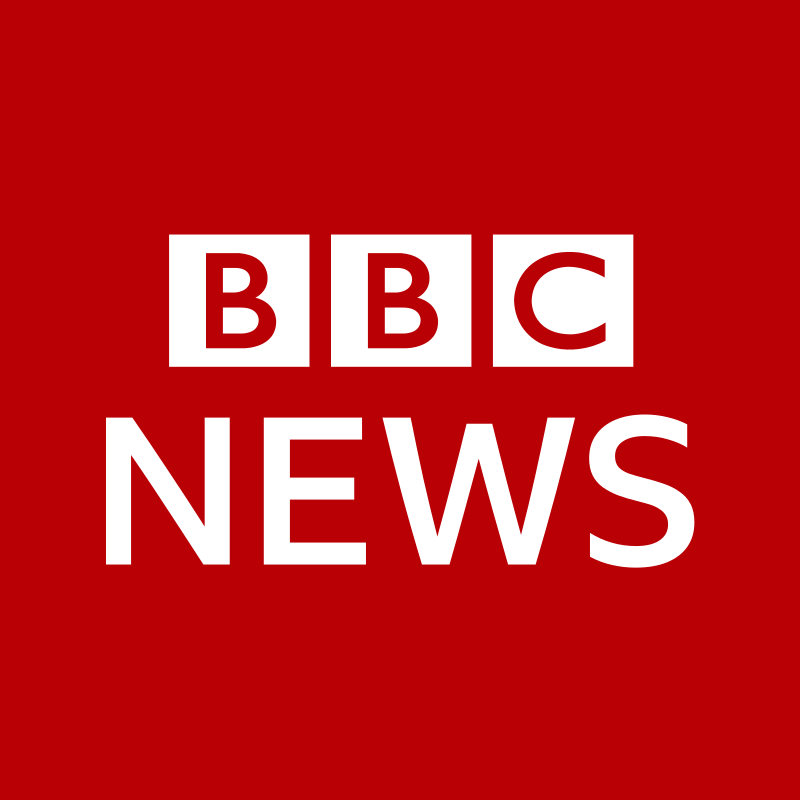
It has been suggested by foreign media that Swedish ethnic minorities have also been hit hard by the pandemic, that it is three times higher in these communities than amongst other communities.
Immigration has been a major source of population growth and cultural change throughout much of the history of Sweden, and in recent centuries the country has been transformed from a nation of net emigration, ending after World War I, to a nation of net immigration, from World War II onwards.
The economic, social, and political aspects of immigration have caused controversy regarding ethnicity, economic benefits, jobs for non-immigrants, settlement patterns, impact on upward social mobility, crime, and voting behaviour.
There are no exact numbers on the ethnic background of migrants and their descendants in Sweden because the Swedish government does not base any statistics on ethnicity.
This is, however, not to be confused with the migrants’ national backgrounds, which are recorded.
In 2019, there were 2,634,967 inhabitants of a foreign background (foreign-born and children of international migrants), comprising around 25% of the Swedish population.
The number of people with at least one foreign parent was 3,415,166 which counts for 33% of the population.
Of these inhabitants, 2,019,733 persons living in Sweden were born abroad.
In addition, 615,234 persons were born in Sweden to two parents born abroad and 780,199 persons had one parent born abroad with the other parent born in Sweden.
Immigrants in Sweden are mostly concentrated in the urban areas of Svealand and Götaland.
Since the early 1970s, immigration to Sweden has been mostly due to refugee migration and family reunification from countries in the Middle East and Latin America.
In 2019, Sweden granted 21,958 people asylum, and 21,502 in 2018.
The ten largest groups of foreign-born persons in the Swedish civil registry in 2019 were from:
 Syria (191,530)
Syria (191,530) Iraq (146,048)
Iraq (146,048) Finland (144,561)
Finland (144,561) Poland (93,722)
Poland (93,722) Iran (80,136)
Iran (80,136) Somalia (70,173)
Somalia (70,173) Former Yugoslavia (64,349)
Former Yugoslavia (64,349) Bosnia and Herzegovina (60,012)
Bosnia and Herzegovina (60,012) Afghanistan (58,780)
Afghanistan (58,780) Turkey (51,689)
Turkey (51,689)
It is estimated that nearly 25% of the Swedish population has a migrant background.
Nuri Kino, (born 1965, Mardin Province, Turkey), is a Swedish award-winning investigative journalist, documentary filmmaker, author and human rights expert.
He is the author of several nonfiction books, and hundreds of stories and reports from the Middle East, western and eastern Europe as well as Africa over the past two decades.
He has won awards for his reporting on human rights issues, and is the founder of the human rights organization A Demand For Action (ADFA) which advocates for persecuted minorities in Iraq, Syria,Turkey and elsewhere in the Middle East.
Above: Nuri Kino, 2009
Kino suggests that ethnic communities in Sweden have been hit particularly hard by the pandemic, because there is a great misunderstanding of immigrants.
Ethnic communities have been poorly informed and communications to these communities has been confusing, delayed and even conveyed in languages that are not their own.
In these communities everyone knows someone who has died from the pandemic.
To be ethnic in Sweden these days is to live in fear.

For now, Sweden is isolated by a policy they themselves created, where, despite all hopes, neither Swedish lives nor the Swedish economy have been spared.
Lockdown lite may look normal, but that normalcy is far from the norm.
Sources: Wikipedia / Google / Peter Berlin, Xenophobe’s Guide to the Swedes / Melissa Rossi, The Armchair Diplomat on Europe / CBS This Morning, “Sweden sees high Covid-19 fatality rate after foregoing lockdown“, 16 July 2020 / Deutsche Welle News, “Coronavirus immunity: Did Sweden’s model fail?“, 26 May 2020



